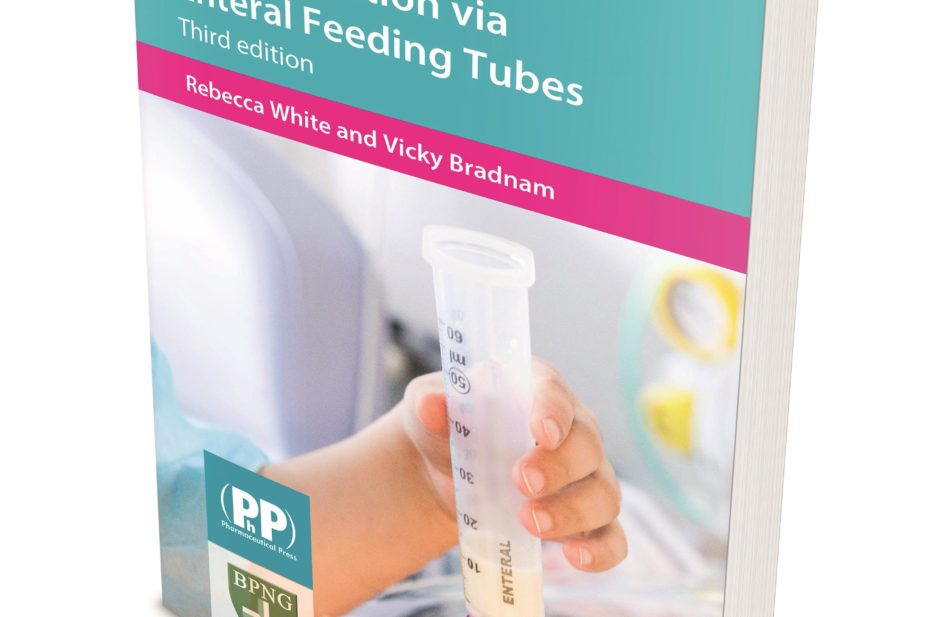
This book covers the technical, practical and legal issues that should be considered before prescribing or administering drugs via enteral feeding tubes. The administration of a drug via an enteral feeding tube is usually outside the marketing authorisation of that drug and prescribers need to be made aware and take full responsibility if drugs are to be administered by this route. Similarly a nurse would be acting unlawfully if, for example, he or she were to crush a tablet and administer it through a percutaneous endoscopic gastrostomy tube without the prescriber’s prior consent. These issues are described in detail in this reference book (published by Pharmaceutical Press, Royal Pharmaceutical Society), which looks at the legal and professional consequences of administering drugs via enteral feeding tubes.
The authors describe the types of enteral feeding tubes, syringes and ports, the choice of medication formulations, flushing, restoring and maintaining patency of tubes, health and safety issues, and clinical risk management.
There is much to consider when deciding which formulation of a medicine is most appropriate for administering via an enteral feeding tube. It should not be assumed that the liquid formulation is best. Guidance on how to administer each formulation is given listing the advantages and disadvantages.
The book includes 433 individual drug monographs, 29 of which are new to this edition. The data in these monographs are based on available evidence obtained from pharmaceutical companies and on the results of research undertaken by pharmacists. Each monograph describes the formulations available, the site of absorption when administered orally, alternative routes of administration, interactions (particularly with food), health and safety issues, suggestions and recommendations, intragastric and intrajejunal administration, and references.
Although the data on this complex topic will never be complete, the book is a valuable reference source for doctors, pharmacists, nurses and dieticians working in any healthcare setting where patients with limited gastrointestinal access are having drugs administered via enteral feeding tubes.


